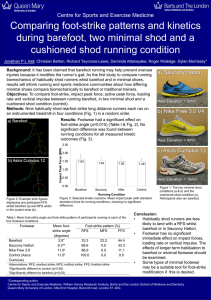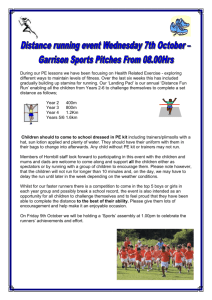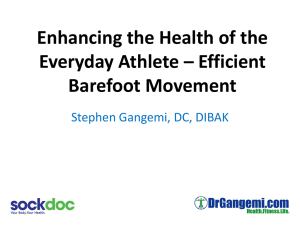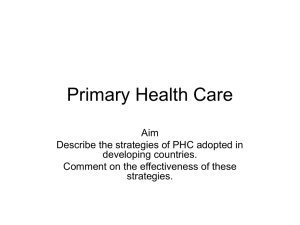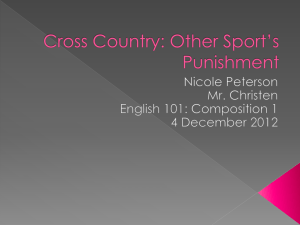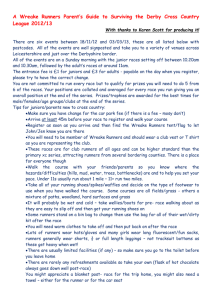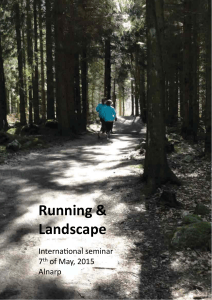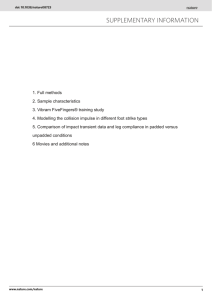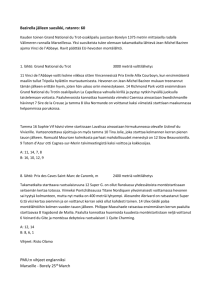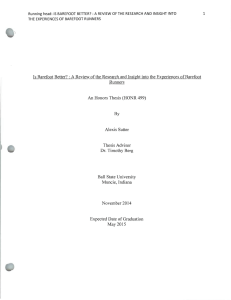AOCPMR Journal Club Discussion - Sept 2013
advertisement
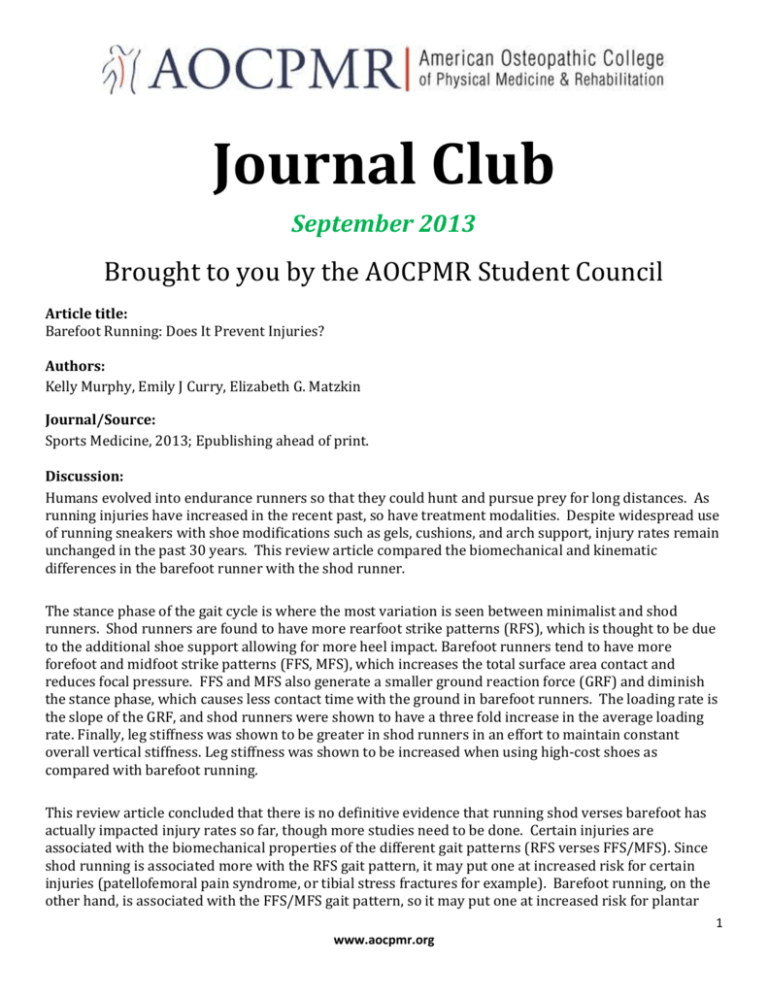
Journal Club September 2013 Brought to you by the AOCPMR Student Council Article title: Barefoot Running: Does It Prevent Injuries? Authors: Kelly Murphy, Emily J Curry, Elizabeth G. Matzkin Journal/Source: Sports Medicine, 2013; Epublishing ahead of print. Discussion: Humans evolved into endurance runners so that they could hunt and pursue prey for long distances. As running injuries have increased in the recent past, so have treatment modalities. Despite widespread use of running sneakers with shoe modifications such as gels, cushions, and arch support, injury rates remain unchanged in the past 30 years. This review article compared the biomechanical and kinematic differences in the barefoot runner with the shod runner. The stance phase of the gait cycle is where the most variation is seen between minimalist and shod runners. Shod runners are found to have more rearfoot strike patterns (RFS), which is thought to be due to the additional shoe support allowing for more heel impact. Barefoot runners tend to have more forefoot and midfoot strike patterns (FFS, MFS), which increases the total surface area contact and reduces focal pressure. FFS and MFS also generate a smaller ground reaction force (GRF) and diminish the stance phase, which causes less contact time with the ground in barefoot runners. The loading rate is the slope of the GRF, and shod runners were shown to have a three fold increase in the average loading rate. Finally, leg stiffness was shown to be greater in shod runners in an effort to maintain constant overall vertical stiffness. Leg stiffness was shown to be increased when using high-cost shoes as compared with barefoot running. This review article concluded that there is no definitive evidence that running shod verses barefoot has actually impacted injury rates so far, though more studies need to be done. Certain injuries are associated with the biomechanical properties of the different gait patterns (RFS verses FFS/MFS). Since shod running is associated more with the RFS gait pattern, it may put one at increased risk for certain injuries (patellofemoral pain syndrome, or tibial stress fractures for example). Barefoot running, on the other hand, is associated with the FFS/MFS gait pattern, so it may put one at increased risk for plantar 1 www.aocpmr.org fasciitis, metatarsal stress fractures, or puncture wounds. However, there has been no change overall in running injury rates regardless of changes in gait patterns, or shoewear. Injuries are multi-factorial and running shoes alone will not likely decide whether a runner will develop an injury. Future prospective studies need to be conducted with larger numbers of study subjects to compare injury prevalence between shod runners’ foot patterns (RFS) and barefoot runners’ foot patterns (FFS/MFS). Questions: 1. What are the 4 phases of the running gait cycle? What are the 2 phases of the walking gait cycle? 2. Describe the 3 layers of a modern running shoe. What part of the running shoe sole typically has the most variation? 3. Describe the 4 most common running injuries. How does each one present? 4. What do orthotics do for a runner in the initial part of the stance phase? 5. Where does more research need to be done on barefoot running? A. Treadmills B. Sprinting C. Fatigued D. Downhill E. Uphill Reviewer: Sarah Welch, OMS-III, AOCPMR Student Council Education Committee Co-Chair 2 www.aocpmr.org

